Russian-Greek Governance: Ideas about Future of Athos after the First World War
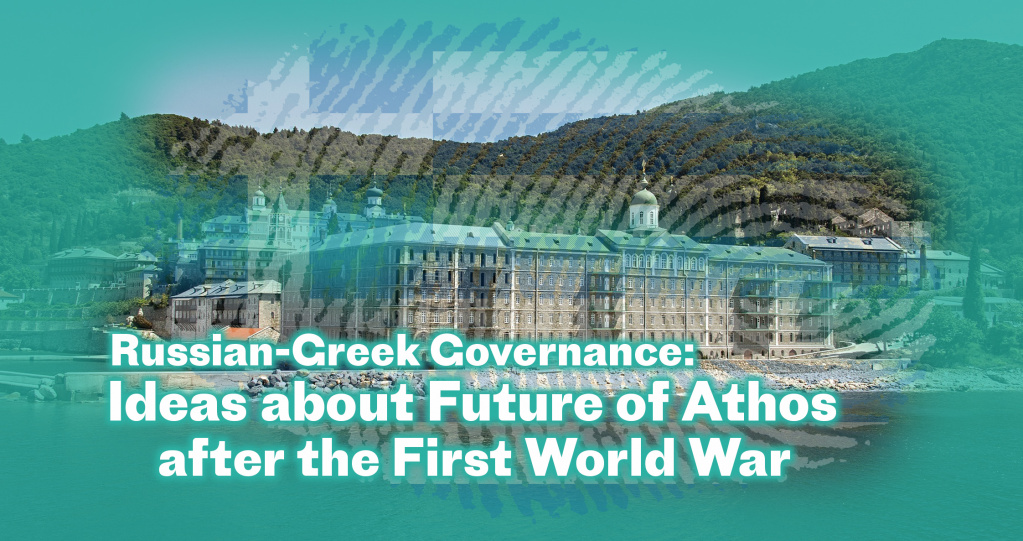
Lora Gerd, Doctor of History, chief researcher at the General History Department of the St.Petersburg Institute of History, Russian Academy of Sciences; associate professor at the Department of Biblical Studies, Faculty of Philology of the St. Petersburg University; lecturer at the St. Petersburg Theological Academy.
The 19th century was a time when Russian Athos as a unique spiritual and cultural phenomenon of the Orthodox world took shape. Decade after decade, Russian pilgrims would come to the Holy Mount, many of them deciding to spend the rest of their life in the domain of the Mother of God. In the middle of the 19th century there were three large Russian abodes on Athos (the Monastery of St. Panteleimon, the Skete of Prophet Elijah and the Skete of St. Andrew), along with great many cells and kalyvas, each occupied by several monks and novices. The Russian monasticism enjoyed unfailing support of Russia’s Embassy in Constantinople and Consulate in Salonika (Thessaloniki). Consuls would make trips to Athos, lending personal support to the monks. A generous donation flow from Russia, metochions in Moscow,St.Petersburg and Odessa, as well as numerous affiliated monasteries, such as the New Athos and the Second Athos Monasteries in the Caucasus and metochions in Palestine, Serbia and Lebanon, allow us to speak of a whole “Athonite world” and of the influence of the Russian Athos extending far beyond the Holy Mount.
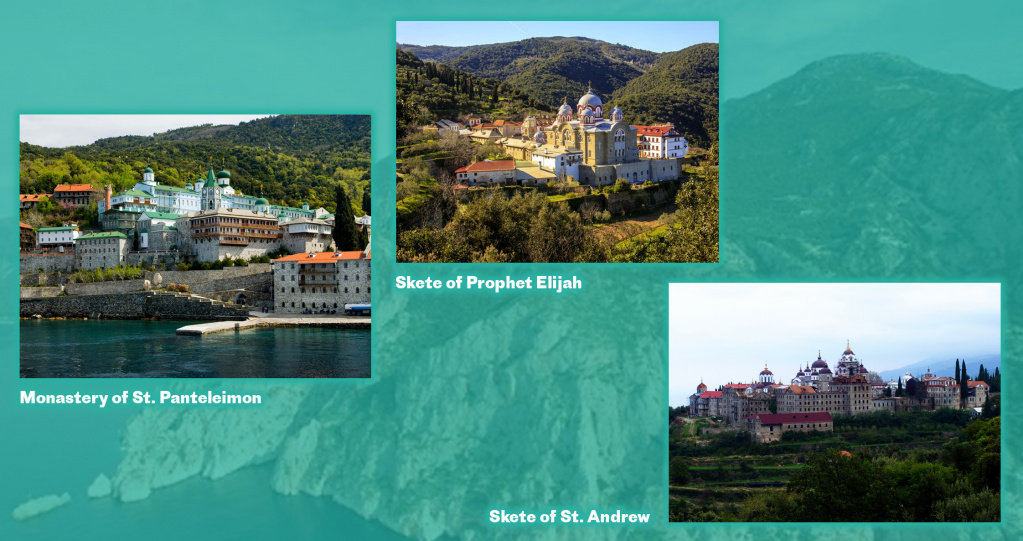
In the Ottoman Empire, the Russian Athonites enjoyed relative freedom. As the Ottoman law stood, their status was uncertain. They were not regarded as foreigners; neither did they lose their rights as Russian subjects. Most of them actually kept their Russian passports and remained Russian subjects in the eyes of the Russian authorities. However, there was an edict issued by Emperor Alexander I in 1816, which declared monastic vows taken abroad invalid in the territory of Russia. This contradictory legislation, while accounting for occasional bureaucratic impediments, enabled the Russian monks under the diplomats’ patronage to take in new brethren and win a foothold on the Holy Mount. The increased number of the Russian monks, amounting to over 4,000 people in the early 20th century, caused concern among the Greeks who considered Athos to be their territory. As ethnic tensions in the Balkans were rising in the second half of the 19th century, the Slavic, first of all Russian, monasticism was seen as a threat to the national interests of Greece. It took Russian diplomats a lot of effort to persuade Patriarch Joachim II to confirm the official status of the Monastery of St. Panteleimon as the “Russian” cloister, which was done in 1873.
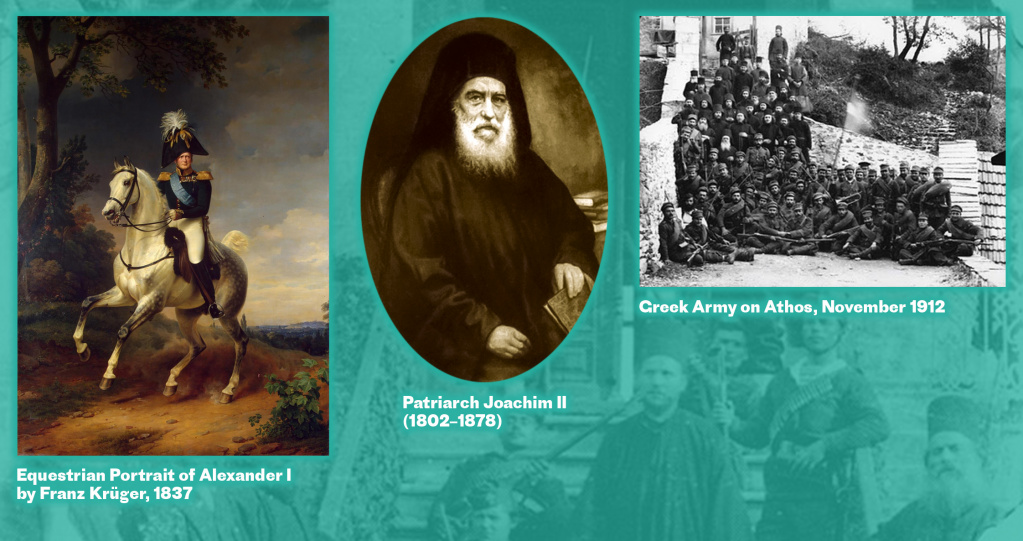
The entangled tensions reached their peak in 1912, when the First Balkan War broke out. For the first time, the Christian countries of the Balkan Peninsula determined to present a united front against the Ottoman Empire. On November 2, 1912, a Greek detachment led by Telemachus Kourmoulis landed in the Daphne dock on Mount Athos; a royal decree on the occupation of Athos was read out. On the following day, November 3, eight-hundred strong troops landed on Athos. While the liberation of Athos was truly a Pascha for Greeks, among the Slavic monks it caused concern and alarm. Would the Treaty of Berlin signed in 1878 still be observed, which in one of its clauses referred to the patronage of foreign monks by their respective consulates? What status would Athos have? The latter question was a subject of long-lasting discussions. Initially, it was supposed to be resolved at the London Conference of the Great Powers in May 1913. Russia was a staunch advocate of the internationalisation of Athos, seen as common Orthodox-wide heritage, under the protection of six Orthodox states: Russia, Greece, Romania, Serbia, Bulgaria and Montenegro. Bulgaria was included in this list inasmuch as it had its monastery on Athos and there were hopes that its schism with Constantinople, which began in 1872, would be lifted. The idea of the international status for Athos was aimed firstly at neutralising the Greek supremacy and secondly at defending the rights of the monks who were natives of the aforementioned Orthodox countries. The idea belonged to Russian Foreign Minister Sergei Sazonov, who insisted that the Holy Mount should have neutral status and remain under the spiritual authority of the Patriarchate of Constantinople.
Preserved in archives are several projects that present a future system of government on Mt Athos. The first one belonged to Alexei Belyaev, Consul General in Salonika (Thessaloniki). According to his project, the six Orthodox states were each to delegate one representative to Karyes, the administrative centre of the Holy Mount. The delegates were supposed to form a council, which, led by a Russian representative, would have replaced the Turkish official kaymakam. The delegates’ functions would have been similar to those of the consuls representing their respective countries. The project was viewed as implementation of a longstanding idea of a Russian Consulate on Mt Athos – the idea that came to nothing in the Ottoman times. As for religious administrative organisation on the Holy Mount (Protaton), it would of course have remained unchanged.
The author of the second project was Alexander Petryaev, Russian Consul in the city of Bitola, Macedonia. His project, which in many provisions echoed Belyaev’s plan, did not imply Athos’s accession to one of the Orthodox countries. Power would have remained in the hands of the patriarch and disputes would have been resolved by means of agreement between the Patriarchate and the Russian Consulate with the participation of diplomats from other Orthodox states.
A memorandum prepared by an official of the Russian Embassy in Constantinople, Boris Serafimov, assigned the dominant role to the Russian patronage. As was emphasised in the document, the monasteries that did not belong to Russians, nevertheless depended in their existence on the money raised in Russia or on revenues from estates in Russia. A conclusion was made that non-Russian monasteries would fall into neglect without the help of the Russian Empire. Serafimov believed that over time many of the seventeen Greek monasteries would become Russian. “Having preserved the old Orthodox Athonite way of life, our monks will find themselves in a better situation,” he wrote. As for administrative organisation, the memorandum stipulated that the Orthodox countries would in turn delegate their representatives to Athos. Thus Athos would have come under the patronage of Russia, and Western powers should not interfere in the affairs of the purely Orthodox institution.
Another project, which stands apart, was put forward by a legal adviser of the Russian Embassy in Constantinople, Andrei Mandelstam. Leaving aside the ecclesiastical aspects of the matter, he drew up a legal text forty-eight pages long. According to that document, Athos was to be declared a neutral territory under the spiritual guidance of the Patriarch of Constantinople and governed jointly by the six Orthodox states (condominium). Civil authority would have been exercised by six commissioners. As the memorandum noted, there were supposed to be twelve representatives in all: five from Russia, three from Greece and one from each of the rest countries. The commissioners would have had a gendarmerie at their disposal, staffed by the countries in proportion to the number of their representatives. A Synaxis as the body of monastic self-government would have been given unlimited religious and limited financial power. In Mandelstam’s opinion, Athos should have all defining characteristics of a state, such as its own territory, subjects, executive and judicial authorities. Place of residence was to be the only factor determining citizenship. All pilgrims would have been regarded as foreigners. For reference, Mandelstam used examples of other state formations, namely the Republic of Cracow (1815), Moldavia and Wallachia (1856), and Crete (1899). The idea was that the collective condominium of the six states, with Russia at the head, would have allowed to avoid national conflicts.
Alexei Dmitriyevsky, a church history scholar, drew up a project that centred on the ecclesiastical aspect of the matter. From the canonical point of view, he believed it important that the Patriarch of Constantinople should retain his power. As for a possibility of Athos’s accession to the Russian Most Holy Synod or to the Archbishop of Athens, in Dmitriyevsky’s opinion, it was inadmissible. He found appropriate the division into cenobitic and idiorrhythmic monasteries on Mt Athos. As for communal administration (Koinotis), Dmitriyevsky deemed it necessary to make some amendments in favour of Slavic monks. He also objected to the presence of secular gendarmes on Athos.
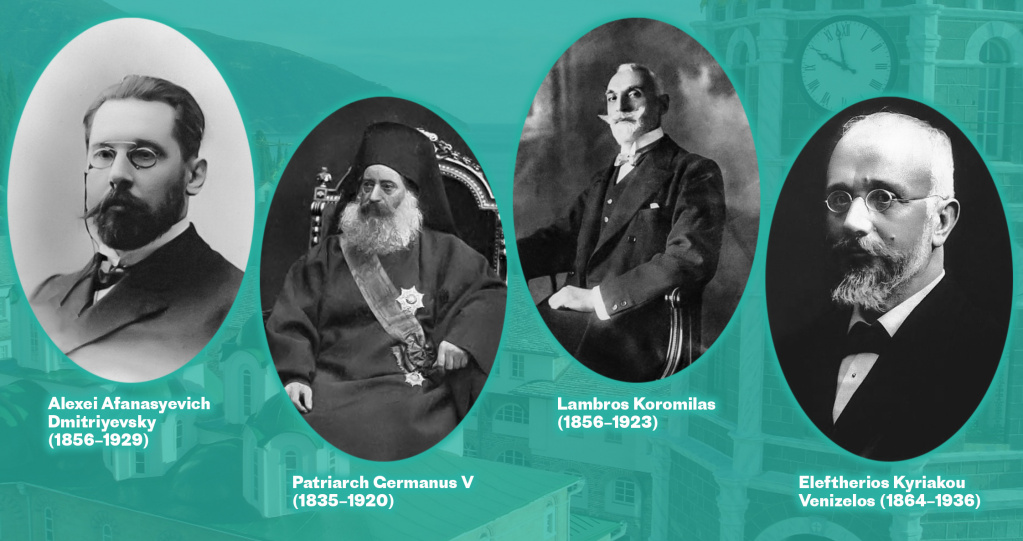
How did the concerned parties react to those projects? The most determined opposition was expected to come from the Greek Government. Negotiations with Patriarch Germanus V of Constantinople created no particular difficulties. Lambros Koromilas, Greek Foreign Minister, and Eleftherios Venizelos, head of the Greek Government, when speaking with Elim Demidov, Russian Ambassador to Athens, expressed their willingness to discuss the project and even make concessions on the Russian proposals. In Venizelos’s point of view, Russia and Greece were the only parties concerned; he might have tolerated the participation of a Serbian representative, but strongly opposed to the Bulgarian one.
The Greek ecclesiastical authorities were less compliant. The Archbishop of Cyprus (later Patriarch of Constantinople), Meletios Metaxakis, spoke harshly against the condominium. As soon as the news about the plans of the Russian Government reached Athos, a delegation of the seventeen Greek monasteries appealed to Athens and to participants in the London Conference, asking for the Peninsula’s immediate accession to Greece. The Russian monks responded by sending on May 12, 1913, their own letter to the participants in the conference with a request for neutral status and self-government for Athos, which implied the election of one representative per every 250-300 monks. The goal was to ensure domination of Russian representatives in the Council (Synaxis).
The Treaty of London of May 17, 1913, only led to a delay in resolving the matter of the Holy Mount status. In July-August 1913, after the Balkan wars, a conference of the great powers took place in London. Among the topics raised there was the status of Mt Athos. The Russian project of the internationalisation of Athos met with an opposition from Austria-Hungary. As a result, only the first part of the project, pertaining to the spiritual authority of the Patriarch of Constantinople, was approved. As for the second part that provided for an international status of the Holy Mount, resolution of that issue was once again postponed. Nor was the matter settled in the Treaty of Bucharest signed on August 26, 1913, which marked the end of the Second Balkan War.
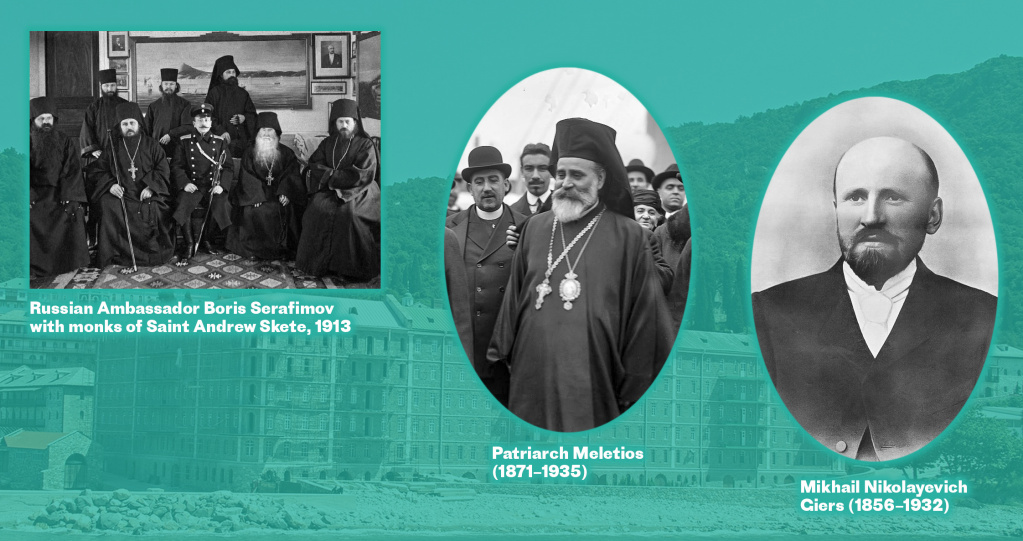
In September 1913, Boris Serafimov was sent on an assignment to Athos. Atmosphere there was extremely tense. The Russian monasticism had been weakened by the deportation of name-worshippers, and the Russian monks were constantly anxious about their future. Encouraged by Meletios Metaxakis, the Koinotis sent another delegation to Athens in October, asking for Athos’s immediate accession to Greece. In these new circumstances Serafimov found the idea of condominium impossible to implement. Instead, he suggested ensuring extraterritorial status of the Russian abodes as it would have made them equal to Russia’s consulate institutions abroad and guaranteed personal immunity for the monks. However, Serafimov’s proposal was not met with approval at the Russian Embassy. The last attempt to discuss the status of Athos was undertaken in July 1914, when, seeking Russia’s help, Venizelos presented to Mikhail Giers, Russian Ambassador to Constantinople, an idea of the Russian-Greek governance for Athos, without the participation of other Orthodox countries. The First World War caused another delay in resolving the matter.
It was not until after the Revolution of 1917 that the Russian Government recognized Athos’s accession to Greece. The matter concerning the status of Athos was finally resolved in 1926, when the Greek Government issued a decree stating that all Athonite monks must be Greek subjects.
